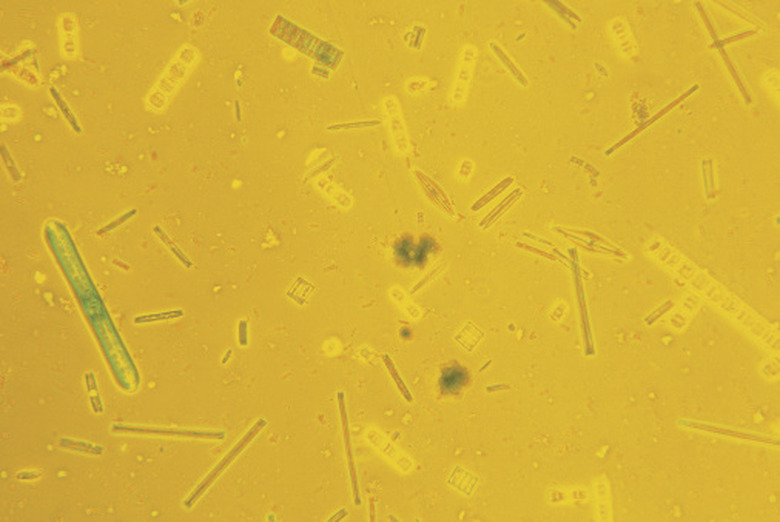Human Uses For Diatoms
Diatoms are a type of protist, a microscopic organism. What makes diatoms remarkable is they have shells made from organic compounds and silica. These shells are left behind when a diatom dies. Diatomaceous earth is a mineral that is formed from fossilized diatom shells, and this is mined for a number of industrial purposes. The product of diatoms, diatomaceous earth, is typically used, though living diatoms are also useful.
Pest Control
Pest Control
Diatomaceous earth can be ground into a fine powder that looks and feels very similar to talcum powder. This powder can be used for pest control. While inhaling a small amount of diatomaceous earth is not harmful to humans, to an insect like a bedbug, flea or fly, this powder is deadly. The powder is sharp on a microscopic level due to the high silica content. It damages the outside of an insect, and, if ingested, ruptures the internal organs.
Abrasives
Abrasives
Diatomaceous earth is used as a mild abrasive when powdered, as the silica in the diatom shells is rough on a microscopic level. Typically, diatomaceous earth is used to polish materials that are soft or easily damaged, and is often used to polish metal. Occasionally, it is used in toothpaste. Diatomaceous earth is a good abrasive for cleaning skin and is sometimes used in soaps and other bath products.
Filtration
Filtration
A very common use for diatoms is for filtration. The fine structures of diatom shells trap foreign particles in fluids, such as dirt, lint, hair and some other microscopic organisms. Diatoms are often used to filter water, particularly water in hot tubs and swimming pools. However, a vast variety of fluids can be filtered with diatoms, including different syrups, alcoholic beverages, medicines, solvents and other chemicals.
Indicator Species
Indicator Species
Diatoms flourish in water all over the world. Some species can be used as an indicator species. Indicator species are used by scientists to determine if an ecosystem is thriving. With diatoms, a scientist takes a sample of water and examines it under a microscope to see how many of a certain species of diatom are present. If the water has many instances of that species, it indicates that the ecosystem is healthy, but if there are few instances, there is something wrong.
Cite This Article
MLA
Leggett, Rochelle. "Human Uses For Diatoms" sciencing.com, https://www.sciencing.com/human-uses-diatoms-8532443/. 24 April 2017.
APA
Leggett, Rochelle. (2017, April 24). Human Uses For Diatoms. sciencing.com. Retrieved from https://www.sciencing.com/human-uses-diatoms-8532443/
Chicago
Leggett, Rochelle. Human Uses For Diatoms last modified March 24, 2022. https://www.sciencing.com/human-uses-diatoms-8532443/
